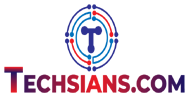Data catalogs have fast become a key component of modern data management. The businesses with the successful implementations of data catalog see amazing changes in speed as well as the quality of the data analysis, in their engagement & enthusiasm of users who want to perform the data analysis regularly. By contrast, organizations without proper data catalog tools often have certain questions like What‘s a data catalog? Why do you need data catalog? What does it do? These are some good questions & logical places you can start the cataloging journey.
Purpose of Using Data Catalog
The Data Catalog allows you to understand both the technical and the business views stored in data sources. The data catalog collaborates and centralizes this information collected and shared with your business functionality teams or IT teams. The catalog includes several functions that generally depend upon an ability of cataloging data like collecting metadata that will help to describe and identify data inventory shared.
The automated discovery of datasets is needed not just for the discovery of the new datasets but it is also important for the initial catalog build. For getting high value from automation use and with less manual effort, the use of the ML and AI for the metadata collection, semantic interference, and tagging is very important. The powerful data catalog offers other abilities that include the right support for the data collaborative and curation data management, tracking, dataset recommendations, as well as other data governance functions.
Looking at the Benefits of Using Data Catalog
The data catalog is very important to the business users and thought as the catalog of knowledge and information about the organization’s data & processes. Processes are used not just to produce the right data, but to consume it in the right way. This synthesizes technical information around the organization’s data assets over various data dictionaries & arranges information in a simple format.
Thus, most organizations are placing their data catalogs at the center of data management strategies & making use of the data catalogs for driving growth, innovation, as well as and insightful business choices. Though, many organizations do not have yet moved to rightly implement data catalog, and they are struggling hard to unlock real data value.
read more : Pii-email
Helps the organizations to sustain proper data culture
A good data catalog can be used as a reference tool for data users. The interface doesn’t require any kind of technical expertise for finding the right data, and making it available to all the users & not restricted to the small group of professionals. This allows the departments in various organizations to collaborate just by sustaining a better data culture.
Enhance data accessibility
The data catalog helps users to ask any specific data or makes it accessible to end-users when required.
Improve data discovery
Many assets and datasets are made every day and making organizations struggle to know and get meaningful insights from any data that they hold. The current survey shows data teams spend over 80% of the time organizing and preparing the data in place of drawing and analyzing insights from this.
Building Right Data Catalog
Creating the data catalog needs the enterprise-wide deal on the standard data definitions & models based on the individual perspectives. Attaining agreement on the data models & definitions over diverging departments, with different views, is a challenging task however one that will be accomplished through the streamlined data governance attempt.
The data catalog is an important component of the enterprise governance framework within the organization. By making use of the data governance for building the data catalog, organizations will add quality components to offer the measure of trust & will add the data lineage for linking the data definitions to the business lingo from various departments.
By including data quality within the data governance, business users will measure the impact data quality attempts have on the expectations of your business. By having access to the workflow abilities & detailing data owners, consumers, and stewards, businesses encourage collaboration as well as increase accountability just by offering transparency in the data ownership.
Conclusion
Making use of the catalog in the organization improves the speed of the data discovery & analysis by over 5 times. It helps data teams to mainly focus on the data analysis, therefore completing the project at right time.

